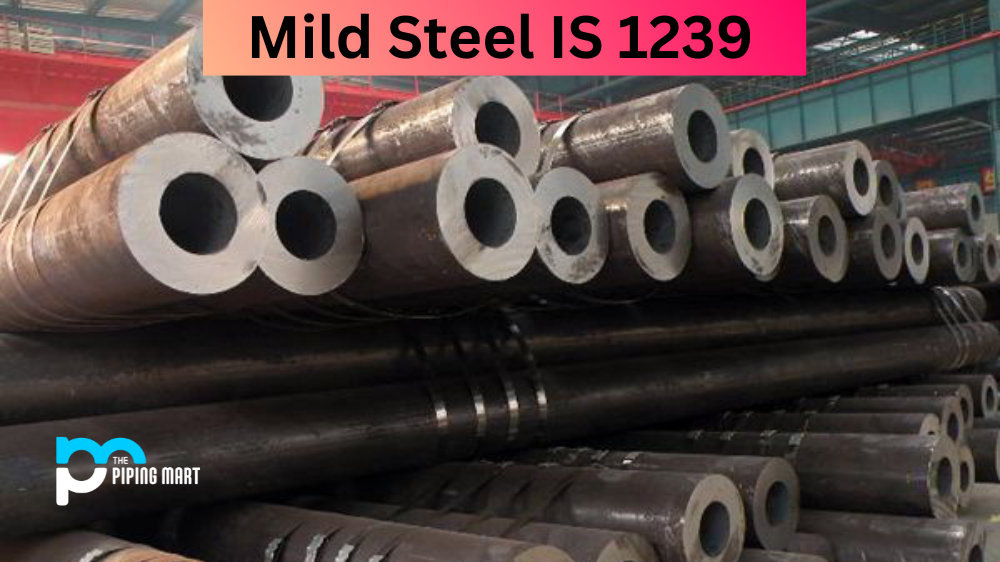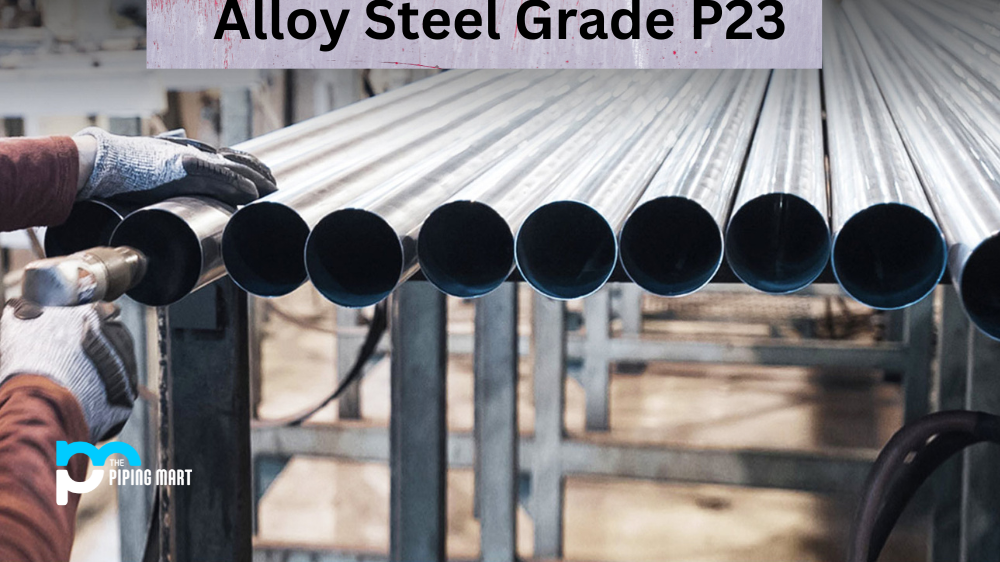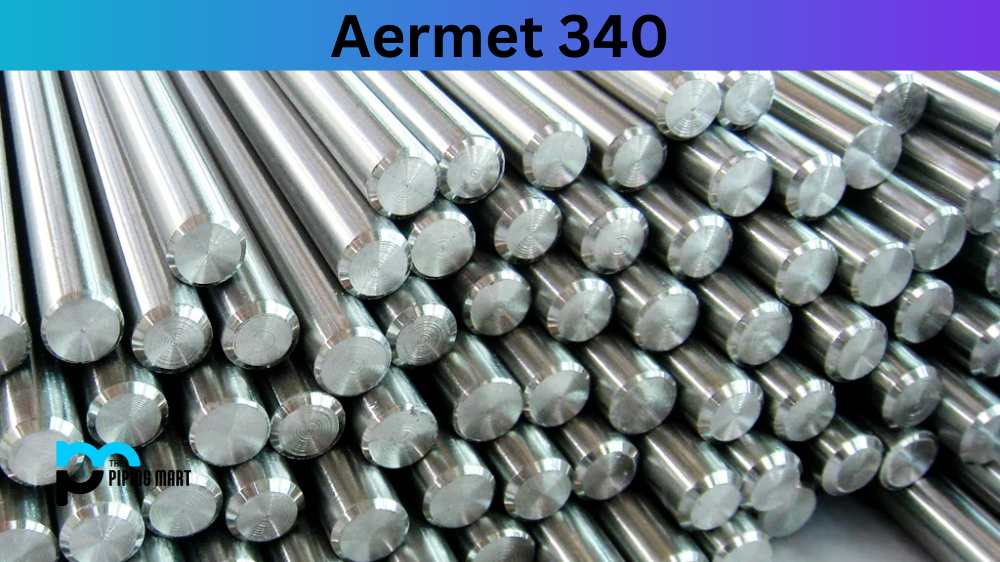Mild Steel is an alloy of iron and carbon, with a maximum carbon content of 0.25%. It is extremely popular because of its inexpensive cost and malleability. In particular, mild Steel IS 1239 is an extensively used grade for applications in diverse industries such as construction, automotive, and many more. Let’s take a closer look at this alloy’s properties, uses, corrosion resistance, and heat treatment.
IS 1239 Composition
The composition of mild Steel IS 1239 includes trace amounts of manganese (Mn), phosphorus (P), sulfur (S), silicon (Si), and copper (Cu).
|
Chemical Composition (%) Max. |
||||||||
| Specification | Grade | S | Mn | C | P | Si | C.0E.0 | |
| PCM | IIW | |||||||
| IS:1239 |
0.0040 |
1.030 |
0.020 |
0.0040 |
|
|
|
|
| Fe 330 |
0.0040 |
1.020 |
0.016 |
0.0040 |
|
|
|
|
| Fe 410 |
0.0040 |
1.030 |
0.020 |
0.0040 |
|
|
0.045 |
|
| Fe 450 |
0.0040 |
1.020 |
0.025 |
0.0040 |
|
|
0.045 |
|
IS 1239 Chemical Properties
This composition gives it excellent machining properties, superior tensile strength, and good weldability. Additionally, it has good impact strength, making it suitable for cold working conditions.
IS 1239 Mechanical Properties
This grade has excellent mechanical properties that make it ideal for diverse applications. Its tensile strength ranges from 360 to 500 MPa, while its yield strength ranges from 210 to 240 MPa. It also has an elongation rate ranging from 20 to 22%. Furthermore, this grade has a Brinell hardness ranging from 120 – 190 HBW depending on its delivery condition, making it suitable for hardening applications.
IS 1239 Physical Properties
Mild Steel IS 1239 has excellent physical properties that make it suitable for different uses such as pipes, tubes, sheets and other components used in construction or automotive industries. It has a melting point between 1430 – 1520 degrees Celsius and is highly resistant to corrosion due to its low carbon content. Furthermore, this grade can be easily machined due to its good surface finishings, which makes it perfect for manufacturing various parts or components.
IS 1239 Equivalent
- Tata Structura 355
- DIN: 2440,
- 2441,
- BS: 1387,
- S: 3589,
- 1239 ISO: 65
IS 1239 Uses
Mild Steel IS 1239 has become extremely popular in domestic and industrial uses due to its strength and durability. This particular Steel is low in cost, which has made it even more attractive as a material for many applications. Mild Steel IS 1239 is used for numerous structural purposes, including bridge construction, highway guardrails, and tanks. It is also found in reinforced concrete frames, pipelines, ducts, poles and masts. The versatility of this mild steel type makes it an ideal choice in countless construction projects worldwide. Thanks to its weldability and formability, it can build almost any shape or structure requiring sturdiness and strength.
Heat Resistance
Mild Steel of the IS 1239 variety is very well-known for its superior level of heat resistance. This form of Steel is specially treated to efficiently handle high and low temperatures, thereby making it an ideal choice for a wide range of industrial uses. For example, it is often used in aerospace, automotive engineering, and construction, where extreme environmental conditions are common. Moreover, mild Steel IS 1239 has excellent wear-resistance qualities that provide greater longevity in this type of application. Overall, it is an invaluable asset for resilient materials capable of withstanding any thermal changes.
Corrosion Resistance
Mild Steel IS 1239 is highly resistant to corrosion due to its low carbon content, which prevents oxidation when exposed to high temperatures or moisture levels. Additionally, this grade can be easily welded using common welding techniques such as gas tungsten arc welding (GTAW) or shielded metal arc welding (SMAW).
Heat Treatment
For improved case depth penetration during the heat treatment process, mild steelIS12 39 should be preheated before quenching in oil or water-quenching baths at temperatures ranging from 860 – 950°C before tempering at 180°C for improved ductility and toughness.
Machining
When machining mild steelIS12 39, one should ensure that the cutting tool material matches that of the workpiece material; otherwise, wear may occur prematurely during operations such as drilling or milling if the wrong tool material is used. When welding mild steelIS12 39, one should maintain proper preheat temperatures to not cause cracking or distortion during cooling cycles after welding.
Welding
Additionally, proper post-weld treatments may be necessary, such as stress relieving at temperatures between 550 – 650°C followed by tempering at 350 – 450°C, depending on the application requirements.
Conclusion
Mild SteelIS12 39 is an incredibly versatile grade alloy that finds application across many industries due to its excellent mechanical properties, thermal stability, corrosion resistance and weldability. It can be easily machined using standard cutting tools. However, care must be taken when selecting these tools so as not to cause premature wear. Also, proper preheating must be done before welding to not cause cracking during cooling cycles after welding. Overall, mild steelIS12 39 is a great choice for any application where cost efficiency, durability and ease of fabrication are key requirements.

Meet Bhavesh, a seasoned blogger with a wealth of knowledge and experience. From metal products manufacturing to retail, Bhavesh has a diverse background in various industries and is dedicated to sharing his insights and expertise with readers.




